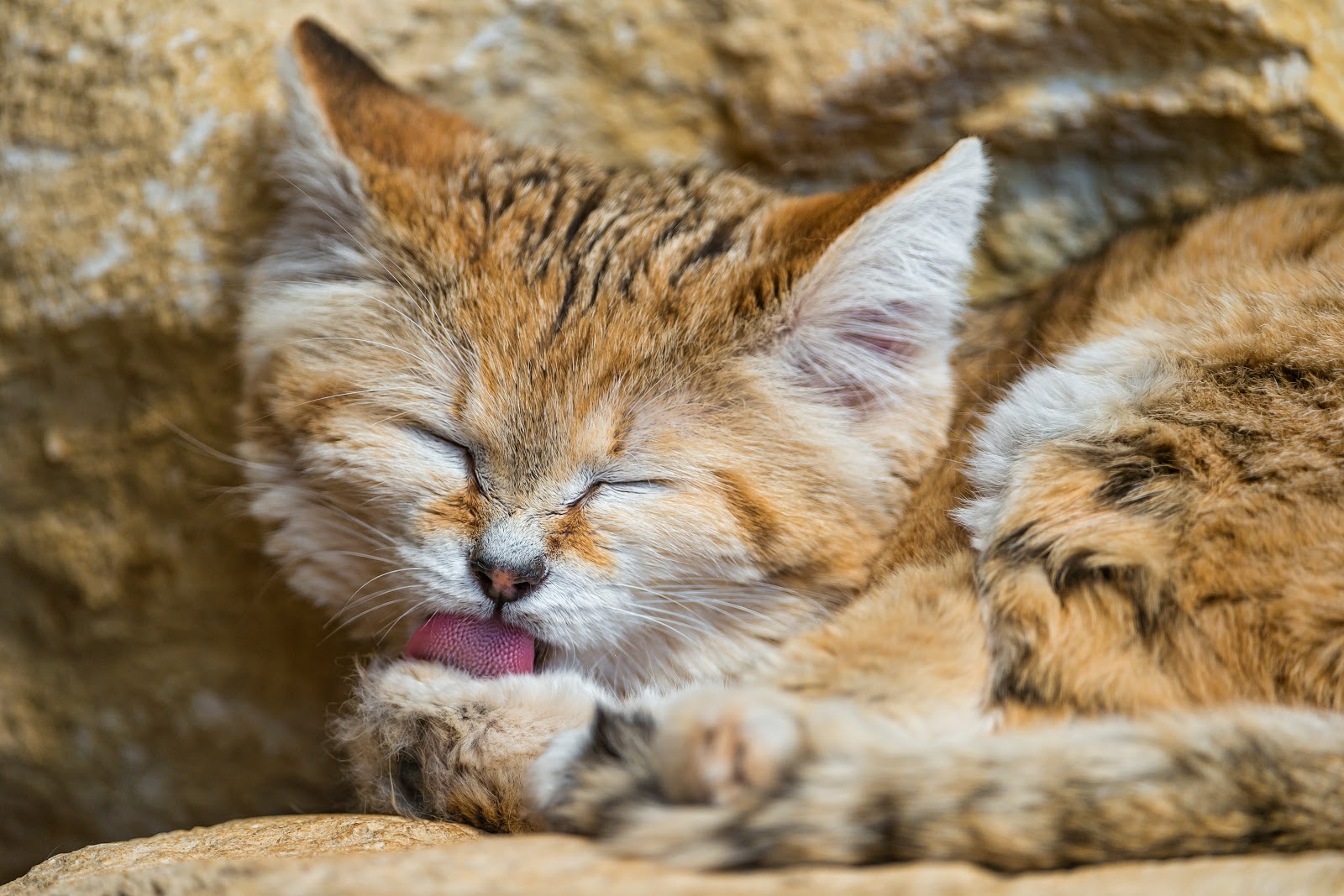Desert Sand Cat Facts

They are found in very arid habitats with little to no vegetation.
Desert sand cat facts. The sand cat is the only true desert living cat. During extreme heat the sand cat cools off in a burrow. These legs features two black stripes at the top.
It is also sometimes named the sand dune cat. It is smaller than a domestic cat and has pale sandy-colored hair which is often marked with darker spots or stripes. Like most other desert animals they can survive for long periods of time without drinking.
The sand cat lives in areas of sandy desert. It has large ears and a broad head and a reddish streak that runs from its eyes across its cheeks. Size and Appearance.
The lynx of the Greeks and Romans was most probably the caracal and the name lynx is sometimes still applied to it but the present-day lynx proper is a separate genus. Sand Cat adaptations include very large triangular ears to detect the movement of small prey underground and at a distance. The sand cat is a rarely-seen desert cat found in northern Africa and the Middle East.
The Sand Cat Felis margarita is a small wild cat that is uniquely adapted to its desert habitat. It has a dense soft fur that is a pale sand or gray color above and paler underneath. Sand Cats weigh in at 4-8 pounds and reach lengths of 29-36 inches and heights of 10-12 inches.
Coat patterns vary markedly in this species with some having numerous spots and stripes and others having none. A layer of thick fur on the sand cats paws provides protection from the hot desert sand. The fur of the sand cat is a sandy colour.



















